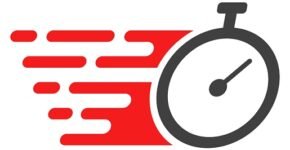Top 15 Essential Tools Every Web Developer Should Use
Web development is a dynamic field that necessitates possessing varied tools for effective website and web application design, testing, and maintenance.

In this blog, we will be discussing the best 15 indispensable tools every web developer should own. It does not matter if you are an experienced programmer or you’ve just started with programming; these tools will facilitate your operations and improve the quality of all your projects.
What are Web Development Tools?
Web developing tools are software applications or platforms that help developers create and maintain websites and web applications. Developers can use the right tools to automate repetitive tasks, manage complexities in projects, and make sure that the end product is standardized as required.
Why Should You Use Web Development Tools?
The Web development tools offer several advantages:
- Efficiency: These tools help to automate a variety of aspects of development, which helps developers focus on coding rather than dull tasks.
- Collaboration: Several developers can work on the same project at once using tools like version control systems without any problems.
- Quality: Identifying and correcting errors early in the development process is made easier with testing and debugging tools leading to high-quality applications or websites.
- Productivity: Integrated development environments (IDEs) and code editors have features such as syntax highlighting, code completion, and debugging that ensure coding is faster with fewer errors.
- Creativity: Design tools enable developers to prototype and visualize their ideas before they start writing any code thereby resulting in better user experiences.
Best Web Development Tools Recommended for Developers
Let’s jump into a few of the most suggested tools across various categories:
Code and Text Editors
Visual Studio Code:
Visual Studio Code (VS Code) is among the most favored code editors for web developers. It has a lightweight nature despite its vast functionalities as it can be used for various programming languages hence making it applicable in both frontend and backend development. Some of its notable attributes include IntelliSense (an intelligent code completion), integrated Git commands, and a comprehensive range of plug-ins that come in handy when tailoring the editor according to your specifications.
Project IDX:
Cloud services that are based on the Google platform can be integrated with Project IDX, which is an emerging cloud-based IDE. Code can be written, tested, and deployed right from your browser by developers themselves. This is especially important for teams working on distributed projects since it has great collaborative features; hence, it is very useful in contemporary web development.
Local Development Environments
XAMPP:
Apache Friends has created XAMPP, which is an open-source, cross-platform web server solution stack package. It offers a user-friendly environment for programmers to establish a local server to test their websites or applications before they go live. That is why XAMPP is the right tool to employ in developing dynamic web applications as it allows users to run Apache, MySQL, and PHP on their machine.
Frontend Frameworks
Bootstrap
A front-end framework, which makes it easier to create responsive and mobile-first websites is Bootstrap. It offers a set of ready-made components including menus, buttons, forms, and models that can be inserted without any hassle into anyone’s project. The grid system of Bootstrap is known for constructing adaptable layouts that change as per various screen sizes.
Semantic UI
Semantic UI is yet another front-end framework whose primary focus is on simplicity and purporting ease of use. It utilizes human-friendly HTML for creating beautiful and responsive layouts. Its class names are also user-friendly thereby enhancing the readability of the code and making it easy to maintain. For developers seeking a clean and minimalistic design with all features intact, Semantic UI is their perfect choice.
Web Application Frameworks
Angular.js
AngularJS is a strong framework that was built by Google for creating dynamic web applications. It enhances HTML with new attributes and connects data to HTML using expressive, clean, and easy-to-read syntax. In particular, Angular is ideal for single-page applications (SPAs) where contents actively change depending on user interactions.
React.js
React.js is a widely used library for creating user interfaces, especially for single-page applications. Developers can create reusable UI components that keep track of their state with it. React’s virtual DOM makes sure that the updates made on the user interfaces remain fast and efficient thus suitable for performance-heavy applications.
Package Managers
Yarn
Yarn is a package manager that helps developers manage dependency in their projects. It is faster and more secure than the traditional package managers like npm (Node Package Manager) due to its deterministic dependency tree which guarantees the same dependencies will be installed across various environments. Furthermore, Yarn maintains previously downloaded packages, thus eliminating the need for re-downloading.
Web Design and Prototyping Tools

Figma
Figma is a web-based design application that enables real-time collaboration among teams working on web design projects. This is an immensely useful instrument for designing wireframes, mockups, and models. The vector editing and design functionalities of Figma are user-friendly and very easy to grasp, thus it’s the first choice for many technicians dealing with websites. The existence of this software’s ability to work together with other applications and its version history option are the things that separate it from other competitors in website design.
Adobe XD
Adobe XD is one more widely recognized design instrument for wireframes and prototypes. Interactive prototypes, voice instructions, the ability to respond to various screen sizes – all these features can be found in this tool. Moreover, it perfectly communicates with other programs from the Adobe family like Photoshop and Illustrator ensuring designers feel at home using it.
InVision
If you are thinking about creating a passive animation, InVision is one of the top-rated designs and prototype tools. Also, it comes with unique collaboration features such as commenting, and version control among others that facilitate teamwork efforts throughout every stage of design projects. It can also be used as a testing tool by making use of its ability to simulate how users interact with the system, hence perfecting their experiences before the actual development process.
API and Testing Tools
HoppScotch
HoppScotch is an extremely simple tool that helps in testing APIs. Developers can easily send HTTP requests and view responses in the browser without any other software. It provides different methods such as GET, POST, PUT, and DELETE. Other features that come with this tool include environment variables and automated testing. This simplicity and easy-to-use nature is what makes HoppScotch very popular among developers who require rapid API tests.
Postman
An API developer cannot forget Postman API Improvement who can transform, check, and write documentation for their APIs. It provides many options such as testing by machines, simulating servers, and working with command controls. Most developers find Postman easily accessible due to its easy interface among other things. They have also made sure that there is a lot on paper about it to help more people understand how it works.
Website Testing Tools
Selenium
Selenium is a free and open-source test automation framework for web applications. This means that it has a complete set of tools that you can use to automate widely used web browsers to test the performance of websites and web applications on various browsers and platforms. Moreover, Selenium supports many programming languages such as Java, C#, and Python which makes it very flexible in different development environments.
Google Lighthouse
Google Lighthouse is an open-source tool developed to improve the quality of web pages. It audits performance, accessibility, SEO, and other aspects. Developers can run Lighthouse in Chrome DevTools, from a terminal or as a Node module. The detailed reports assist developers in identifying issues that should be addressed to ensure their websites are user- and search-engine friendly.
To learn more about some of the Best Automation Software Testing Tools
Factors to Consider Before Choosing Web Development Tools
Making the best choice of web development tools can sometimes be hard considering how many they are. Here are some things to think about:
- Project Requirements: Different projects may require different tools. A simple static website for instance could just need an editor and a browser, whereas building a complex web application would require the entire stack of development tools.
- Ease of Use: Tools should be user-friendly with good documentation. For beginners, the learning curve should be manageable.
- Community Support: Tools that have a large and active community are often more reliable because they receive regular updates and bug fixes; moreover, extensive troubleshooting resources are available as well.
- Integration: Take into account how well the tool works with other tools and platforms you are using. Seamless integration saves time thus reducing compatibility issues.
- Cost: Some tools are free while others are expensive; therefore it is always important to compare costs against benefits especially when it comes to long-term projects, so that one does not regret in future after spending huge amounts on an expensive tool yet its benefits were very few or none at all.
Tips to Choose the Best Web Development Tool
- Identify Your Needs: Before selecting a tool, understand your project’s requirements and choose tools that align with your goals.
- Test and Experiment: Don’t hesitate to try out different tools before settling on one. Many tools offer free trials or have free versions that allow you to test their features before you can pay.
- Stay Updated: The web development landscape is constantly changing. Therefore, it is important to keep an eye on new tools and updates so that you can always use the best ones.
- Seek Recommendations: To get recommendations and feedback from other developers, join web development communities, forums, and social media groups.
- Evaluate Performance: Regularly assess the performance of your chosen tools because if they start affecting your productivity it might be time for searching for alternatives.
Final Thoughts
The selection of the best web development tools is an essential part of building efficient, high-quality websites and applications. The 15 tools described in this blog provide a strong base for different areas of web development from coding and design to testing and deployment. Whether you are just starting out or want to improve your current workflow, these tools help out in every way possible to succeed in today’s competing digital space.
Keep in mind that the greatest instruments are those that connect with the needs of your project as well as personal choice. Experiment with numerous options to take note of what is trending in the industry so as not to fall behind when it comes to adjusting your kit continually. When using the right mix of web development instruments, you can simplify your processes and be more productive which will ultimately lead to creating amazing online experiences that stand out from the rest on the internet.





